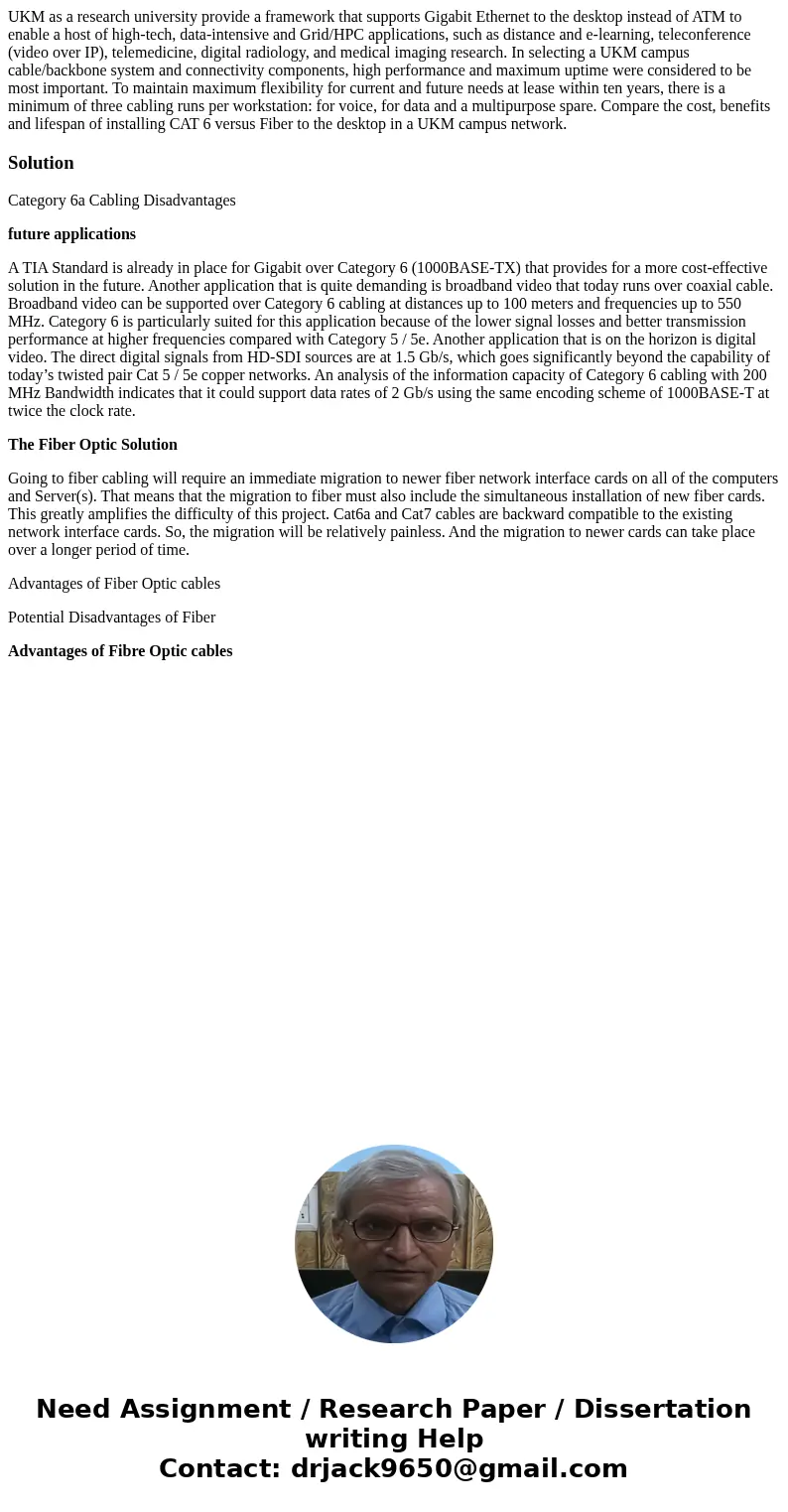UKM as a research university provide a framework that suppor
Solution
Category 6a Cabling Disadvantages
future applications
A TIA Standard is already in place for Gigabit over Category 6 (1000BASE-TX) that provides for a more cost-effective solution in the future. Another application that is quite demanding is broadband video that today runs over coaxial cable. Broadband video can be supported over Category 6 cabling at distances up to 100 meters and frequencies up to 550 MHz. Category 6 is particularly suited for this application because of the lower signal losses and better transmission performance at higher frequencies compared with Category 5 / 5e. Another application that is on the horizon is digital video. The direct digital signals from HD-SDI sources are at 1.5 Gb/s, which goes significantly beyond the capability of today’s twisted pair Cat 5 / 5e copper networks. An analysis of the information capacity of Category 6 cabling with 200 MHz Bandwidth indicates that it could support data rates of 2 Gb/s using the same encoding scheme of 1000BASE-T at twice the clock rate.
The Fiber Optic Solution
Going to fiber cabling will require an immediate migration to newer fiber network interface cards on all of the computers and Server(s). That means that the migration to fiber must also include the simultaneous installation of new fiber cards. This greatly amplifies the difficulty of this project. Cat6a and Cat7 cables are backward compatible to the existing network interface cards. So, the migration will be relatively painless. And the migration to newer cards can take place over a longer period of time.
Advantages of Fiber Optic cables
Potential Disadvantages of Fiber
Advantages of Fibre Optic cables

 Homework Sourse
Homework Sourse